-
Posts
1,281 -
Joined
-
Last visited
Content Type
Profiles
News and Information
Tutorials
Product Reviews
Supplier Listings
Articles
Guitar Of The Month
Links and Resources
Forums
Gallery
Downloads
Posts posted by Ben
-
-
Interesting...
Well... If there is a distinct boundary where the mass per unit length changes, moving waves would (partially) reflect at that point... (how much would reflect would depend on how big the change in mass between the 2 sections was) so if you had a constant variation of string mass along the length then I guess they'd somehow reflect gradually along the length of the string as they moved (?) [i can picture that happening in my head]
I'd imagine that if there was a sudden change in mass/ unit length, you'd certainly get some weird harmonics. If it was more gradual, I'm not so sure. It would surely affect the sound but I'm not so sure how.
How does an impedence mismatch between amp/ speakers affect the sound? I've never actually tried that myself.
I'd imagine that the change in sound would bear some similarity with the amp/ speaker mismatch actually...
-
Those fretboards look like they will really fit with the zebrawood. The grain pattern looks very similar.
-
Welcome, and thats one hell of an inlay!
-
I made a 24 piece body out of laminated pine/ spruce (the shop was selling it as spruce but I think it was pine), and it actually resonates more than any other guitar I have. (by that I mean that you can feel the vibrations in the body more strongly than with my other guitars.)
That may just be due to the wood being lighter, and easier for the strings to drive or something. It sounded pretty good too.
Thats all I can offer from experience.
I find it funny that when you look at a body with 4/5/6/7 pieces of swamp ash, its considered crap, but if its walnut/maple/ebony/maple/cocobolo/maple/ebony/maple/walnut or something similar, its considered 'cool'Ive thought the same before.
I personally doubt it makes as much difference as some make out. That feeling doesnt come entirely from experience, but with all the variables that could affect a guitars sound, I'd imagine it is way down on the list in terms of importance, below pickup choice, strings, scale length... etc.
-
Took me a while to decide, but in the end Russ got my vote. Theres just so many cool ideas in that build... the attention to detail is fantastic. And as GregP said, the fretboard looks awesome.
I dont have the time to go through all the other entries a name at a time and commend them all individually, so let me just say that they are all awesome and it was a difficult decision choosing just one! Loads of great designs and ideas. I'd happily own all of them

Wes, (firstly thanks for the vote
 ), and that logo was added in about a second on paint with no consideration- don't worry, I'm not about to scrawl my initials across the headstock in tippex pen
), and that logo was added in about a second on paint with no consideration- don't worry, I'm not about to scrawl my initials across the headstock in tippex pen 
(Also hurry up and finish that spalted maple strat with the distressed hardware in time for next months GOTM! That one's almost guarenteed my vote)
Thanks for the votes so far!
-
Progress at last! Looks good
That binding channel looks immaculate... such a clean cut
And good luck on thursday with your GCSE results!
My brother's just done his too
-
I thought about that but why would it be that the neck pickup works perfectly?
ah, I missed that....
It does sound like the pickup could be the problem, but I'd wait for someone a little more experienced than me to answer before you go an resolder anything.
-
One of your pots may need replacing?
Your symptoms sound the same as when my volume pot broke.
-
How about superconductive pickups?
You'd just need to top up the liquid helium tank every now and then, and as an added bonus you could have a 'gas release' button so you could extend your vocal range to reach higher pitches when needed.
-
Ben, I think your thinking is a bit backwards here. Your analogy of how in the case of the body, the further away from the bridge the wood is, the less it plays a role in the sound of the instrument, is correct. I think you can treat the body as a discrete particle that has ossilations within it, but does not ossilate as a whole, if that makes sense. The neck, however, does ossilate as a unit. Thus, force from the strings is being sapped away to cause these ossilations. The farther the force is from the headstock, the more of a moment arm exists to allow the headstock to vibrate with less force. Thus, the farther you move from the nut, the easier it should become to vibrate the headstock. Now, there are some holes in that idea. One, is that the closer you get to the body, the more vibrations will go through the neck to the body and less to the headstock. Also, typically, as you get closer to the body, the neck gets wider and thicker, making it harder to deform. So my idea is 100% valid, but really the best any of us can do at the moment are close approximations.
Anyhow, that's my logic; it could very well be off base, who knows.
peace,
russ
AAAhhhhhh, I dont doubt that you are both correct. What you both say is what I was overlooking... the fact that the neck will move significantly as a whole... *slaps self*
And I dont intend to argue with your first hand experience David, I'm pretty certain that you know what your doing.

Although when I made the acoustic/ electric comparison I meant it playing-style wise and not structurally, but whatever.
P.s; Russ- If you hadnt noticed- I couldnt answer your question on the mimf RE:GOTM with words, -(since you cant post there on a sunday), so I answered with actions

-
Ben and WezV,
Let me hit a few of these comments with my thoughts(take it FWIW, I am just throughing ideas back and forth with you guys).
I've thought about that before, but I guess it would only really be significant on the lower frets/ open strings, since the further you move from the nut when you fret, the less significant it will become. The body is always directly at one end of the vibrating string, whereas the other end of the vibrating sting varies as you fret.But yeah, I cant see why headstock wood choice wouldnt be equally as important as the body on open strings.
I don't believe you would remove the headstock from the system when you fret. Actually by that line of thinking it is never going to make a difference because even open strings would stop any effect at the nut(this is not the case though). It is a very simple thing to play with though. Try to modify the way a headstock acts(weight or stiffen somehow) and then try to see ho things change up at different fretted positions and open notes.
You wouldnt remove it from the system, just decrease its influence because it wouldnt be as close to the node (where the note is fretted). For example, condsider what would happen if you removed a lot of the wood from underneath the bridge, and then condsider what would happen if you removed the same amount of wood from somewhere a distance behind the bridge. The further that 'distance' was, the less it would alter the sound. Same concept.
Thats how it makes sense in my head at least.
if you were playing on (say) the 7th fret, the wood around and between the 7th fret and the bridge would be what would matter most
This would probably be more relevent on an acoustic.I am not sure why it would be, but the headstock would effect an electric as well as an acoustic. Actually an electrics closed system would probably be effected more noticably than an acoustic.
I was meaning because acoustic playing styles usually involve more open strings, so (given that I think my 1st point is probably true), that would mean that more notes played on an acoustic would be affected significantly than on an electric, where a lot of the playing happens further up the fretboard.
Just speculation anyway.
-
I was anticipating this thread being filled with "be careful"s and references to some legendary 'litchfield' that I never had the pleasure of sharing the forum with...
-
You know your use of Redwood with a Mahogany neck reminded me of something I used to wonder about. The mass of the headstock area really effects the sound of a guitar. I have often wondered why more people that use scarfed headstocks do not experiment with woods with different charictoristics to modify performance. I mean there is a lot of chat about body woods, and it makes a bit of a difference. However headstock wood is rarely mentioned. It will be interesting to see how the light weight headstock effects your guitars performance.
I've thought about that before, but I guess it would only really be significant on the lower frets/ open strings, since the further you move from the nut when you fret, the less significant it will become. The body is always directly at one end of the vibrating string, whereas the other end of the vibrating sting varies as you fret.
But yeah, I cant see why headstock wood choice wouldnt be equally as important as the body on open strings.
This would probably be more relevent on an acoustic.
-
You have more powertools than I do!
You should be fine. A handplane is very useful in addition to what you have, and not too expensive.
-
This is looking like one of the most interesting GOTM's for a while, so I guess I'll try to make it more so;

The specs are:
# 28" scale length
# 1pc Zebrano body
# Wenge neck and fretboard with zebrano inlay
# 24 frets
# Gotoh tuners
# Danish Oil finish
# GFS Mean90 (neck)
# GFS 'Crunchy PAF' (bridge)
# 1 vol, 1 tone, 6 way rotory pickup selector, wired as follows;
1. Bridge humbucker (series)
2. Bridge humbucker (parallel) + Neck P90 in parallel with bridge
3. Neck P-90 on its own.
4. Bridge humbucker (series) + Neck P90 in series with bridge
5. Bridge single coil (split humbucker) on its own
6. Bridge single coil (split humbucker) in series with the neck p90
The knobs in the photos are temporary. I'm replacing the vol and tone with smaller knobs. The pup selector (knob nearest the bottom of the pic) will remain large though.
The body shape is my own design, but it borrows heavily from the fernandes ravelle, just with an extra horn.
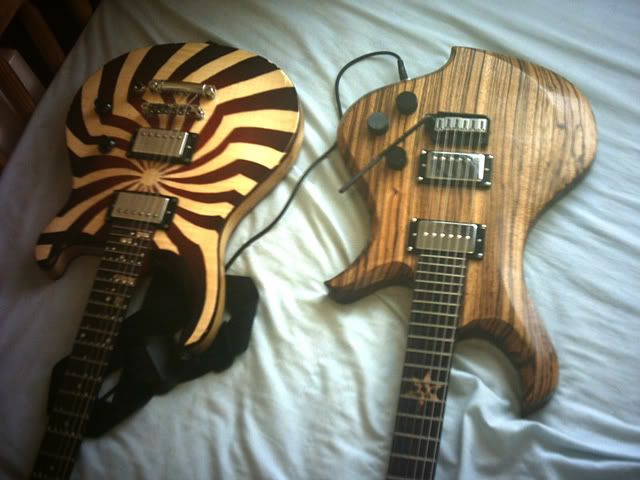
My brother playing it:
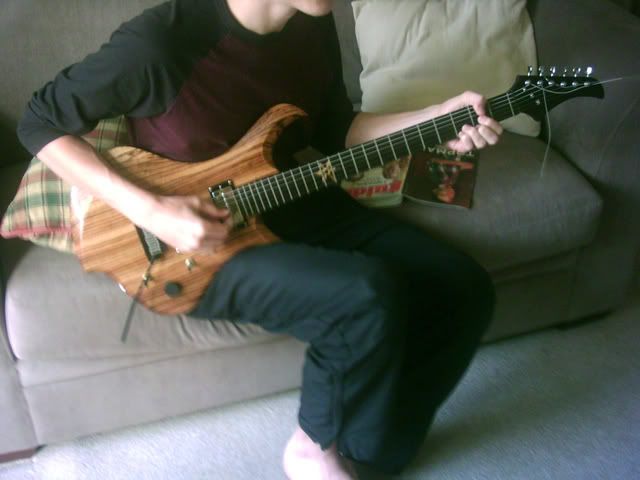
---------------------------------------
Here's a soundclip:
http://www.zshare.net/audio/3206124b7f549d/
I recorded it with a cheap and nasty (£1 !) Headset-microphone, so its not exactly professional sound quality, but it gives you an idea of how it sounds.
You can hear the guitar acoustically too, because I had to record it at low volume.
Heres some more metal-ish stuff. My playing kinda sucks because I dont play much metal- I just think it suits the lower tuning. But then again my playing kinda sucks anyway.
http://www.zshare.net/audio/3206292b2e2059/
---------------------------------------
http://i62.photobucket.com/albums/h86/bent...yofPHTO0543.jpg
http://i62.photobucket.com/albums/h86/bent...yofPHTO0619.jpg
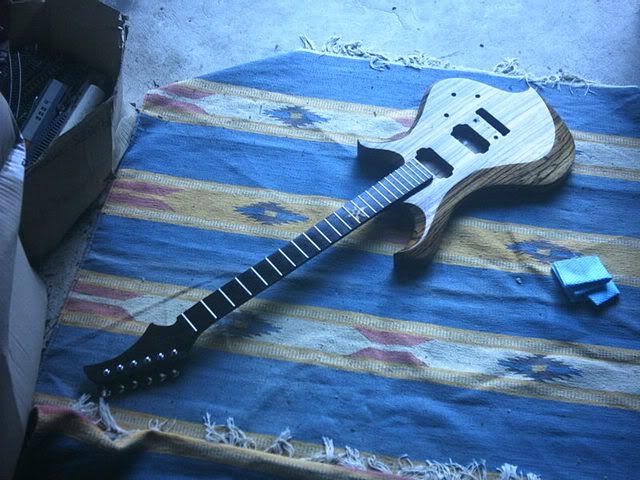
As names go, I think I'll just go with "Zebrano Baritone". Never been one for naming guitars personally.
Thanks to anyone who votes for me!
-
looks nice!
-
Thanks,
Cheers for the link jon, they do seem quite reasonably priced.
is it just me or did this guitar take like a week to buildHah, I think that if you add up all the days that I was actually at my dad's and able to work on the guitar, it comes to about 3 weeks or something.
But I was only so fast because I chose a relitively simple design that I was sure was within my abilities, with pretty much no fancy adornments like binding etc. And danish oil is about as easy as finishes come.
-
Hows the tuning stability with the trem that high up?
Its not quite so high any more. I took those pics before I propperly set up and intonated it (in fact it still could do with a little tweaking). I havent actually had that much time to play it yet, but I havent noticed any problems with tuning stability so far.
By 'proper' strings, I mean a set of Baritone strings, like those by D'addario, LaBella, etc...smallest guage I see is 12-68's, I've personally got 15-80 for my acoustic baritones, and 14-70 is a common middle of the road solution. If you can't find any locally, or order them online, you can always buy a single bass string and add that to a guitar set.Cool, I'll look into it. Would an 80 fit through the hole in a standard tuner post?

Thanks for the comments
-
-
Well, I said I'd wait for the 2 knobs I need before taking pics, but I got bored and took a few anyway:
The 2 big shaft things from the pots will get cut down to size.
The person playing it is my brother.
Also I used my dad's (cheap and crappy) camera, and it seems to always make things look redder than they actually are. The colour is more amber-ish in reality than the pinky-orange colour in the pics.
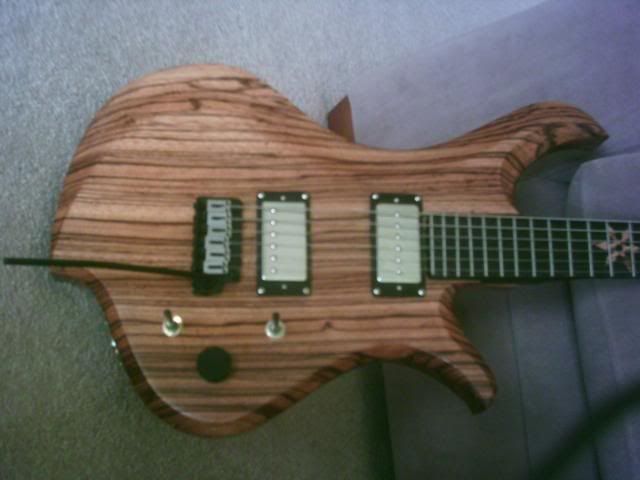
-
Install a punchbag in your workshop maybe?
Seriously, I hope you heal quickly
-
Whoa!
Freaky, but I like it.
Looks like it doesnt compromise functionality too, which is something that people seem commonly overlook on some of the more wild designs
-
With a 28" scale bari, you should be able to (with the right strings) tune down to B. Some tune to C and A, but 'standard' baritone tuning, insofar as it exists, seems to be low B to B.My ex-bandmates used .054"-.056" as B strings on a 25.5" scale, I'd imagine it being very tight tuned to D on a 28" scale. I plan on using .056" and .080" gauges for the 27.25" scale tuned for F# and B, although I doubt that's what I will stick with.
I might try to find some thicker strings. 12's were the thickest they had at the shop.
On the lower tunings the strings felt wrong to me. Too loose. I think it might be due to the fact that the trem 'softens' the feel of the strings a little. Sounded fine though.
it looks great ben!! i bet it sounds fantastic too.......but whats the final weight come in atWell I dont have any way to weigh it accurately, but I can tell you that it's only slightly heavier than my brother's les paul, and that of my dad, sister, and brother (who all have played it), none mentioned the weight.
Its not light (obviously), but its not heavy enough to be a problem.
-
just an idea- but how about going around the outline of that headstock inlay with a painted line, or even a marker pen or something, to make the black border a consistant and uniform width to make it look intentional?
---
That colours a little brighter than what I would go for, but it still looks nice, and the overall guitar looks great. You pulled off that carving well... I wasnt sure what you were describing at first as regards the carving, but it definitely worked!



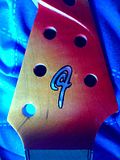
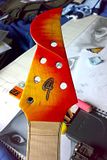
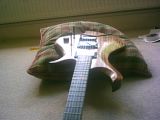
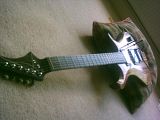
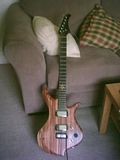
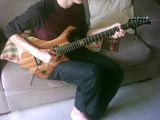
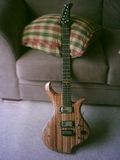
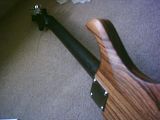
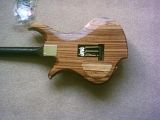

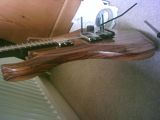
!puppies!
in Site Feedback, Issue Reporting and Test area
Posted
Awesome!
Any of them got names yet?